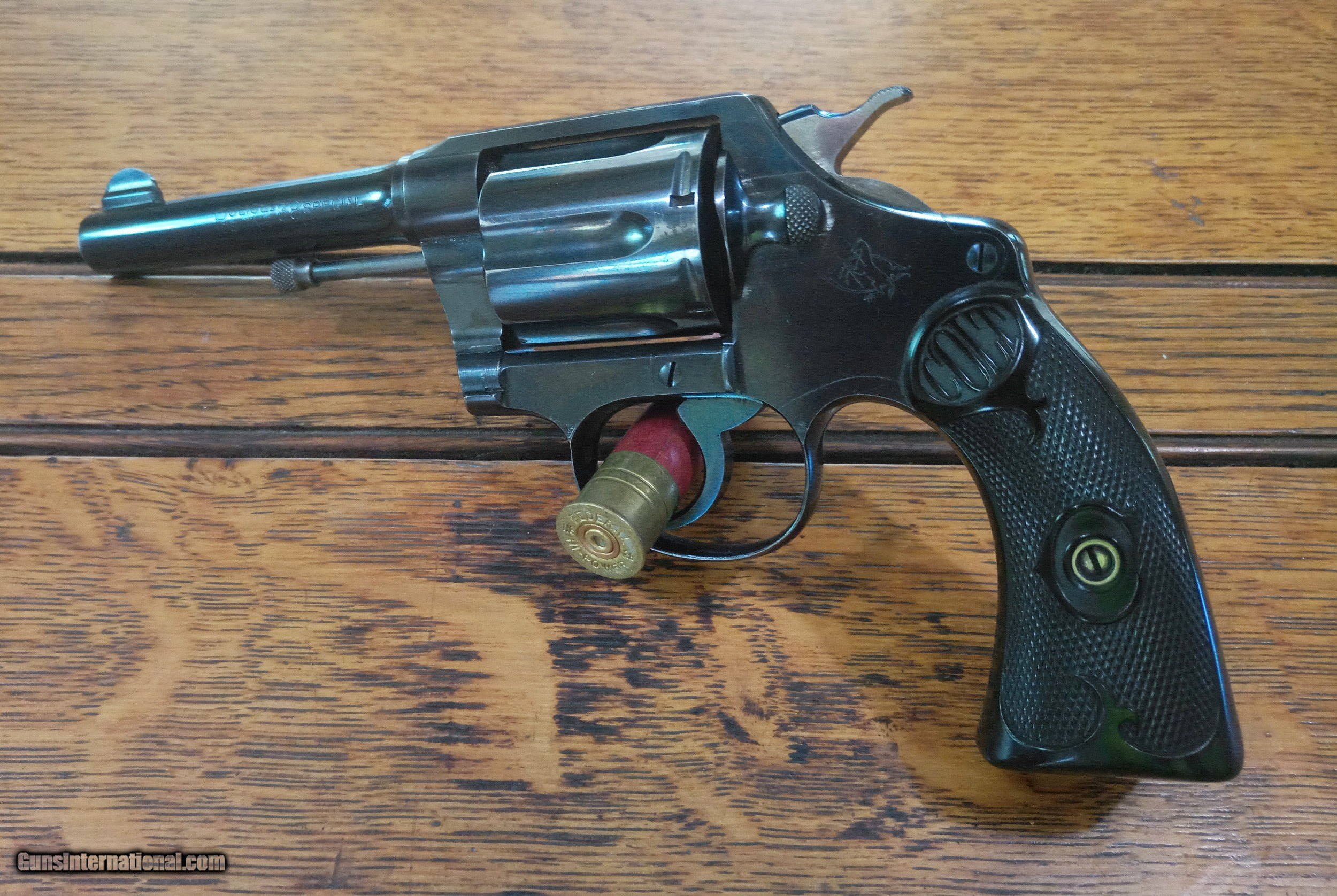

Instead of the normal bluing, the revolver was given a dull parkerized finish.

Savings were achieved by eliminating all unnecessary exterior polishing operations, substituting a smooth-face trigger and hammer, and fitting the gun with simplified checkered wood grips with the Colt medallion the latter was soon replaced by 'Coltwood' molded plastic grips. When government purchasing officials objected to production delays of the OP, as well as the unit cost, Colt responded by simplifying the gun. 38 Colt Official Police were procured directly from the Defense Supplies Corporation (DSC). Commencing in 1941, small quantities of the. 38 revolvers required for arming security personnel charged with the security of government buildings, shipyards, and defense plant installations against sabotage or theft. government requested contracts to supply. became involved in World War II, the U.S. Many Official Police revolvers were also bought by the police forces and militaries of various South American countries. Army also bought some of the revolvers, issuing them to military police and to federal agencies in need of a revolver for their armed agents, such as the Treasury Department, Coast Guard, and the Postal Inspection Service. In addition many state police organizations and even the Federal Bureau of Investigation chose the OP as their issue revolver. By 1933 the Colt sales catalog listed many law enforcement agencies as having adopted the OP as a sidearm, including the New York City, Los Angeles, Chicago, and Kansas City police departments. 38-44, none of the comparable S&W revolvers could manage this feat. 38 rounds intended for competitor Smith & Wesson's new large N-frame revolver, the. In 1930, Colt scored a marketing coup when they publicized that their Official Police model could easily handle the firing of heavily loaded. Colt also upgraded the quality of the gun’s finish from a dull blued finish to a highly polished blued surface. The changes included adding checkering to the trigger, matting the topstrap of the frame and widening the rear sightgroove.

Colt’s marketing strategy was further fine-tuned by making a few superficial alterations to the Army Special revolver and then renaming it as the “Official Police” model. By 1927 the overwhelming sales of two popular models, the Army Special and Colt Police Positive, had assured Colt’s dominance of the law enforcement firearms market.


 0 kommentar(er)
0 kommentar(er)
